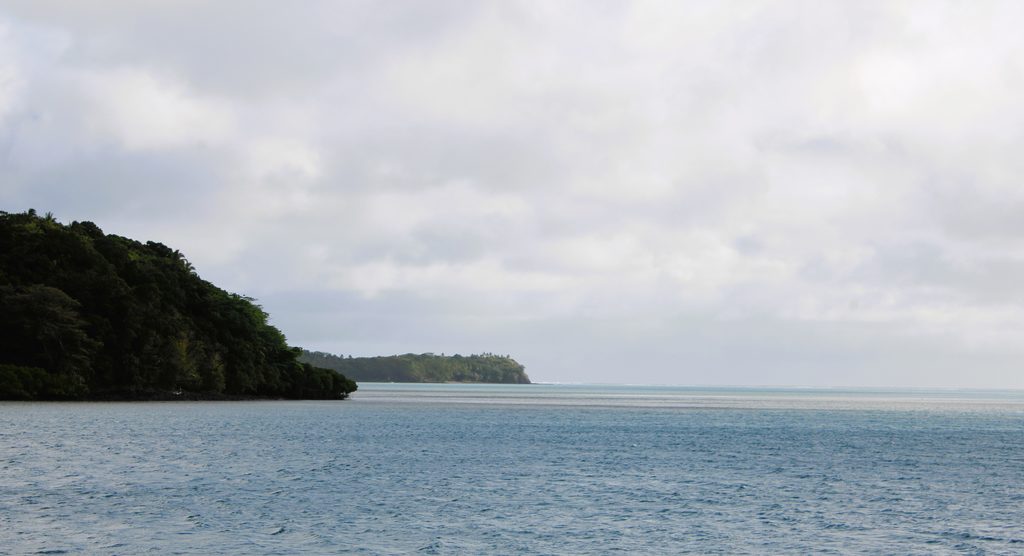ACROSS the blue waters and lush green mountains of Fiji, the line between reality and myth is often blurred, but as our elders would often remind us, these stories of old are a metaphorical way of conveying important truths to the children of the present and future.
Deep in Yasayasa Moala in the Lau group and now in almost every Fijian home exists a tale of lost paradise.
It is a story passed down through generations, of an island that shimmers with impossible beauty and then vanishes without a trace.
This is the enduring mystery of the island of Burotukula, Fiji’s own, ever elusive Eden.
A paradise remembered
Reverend Joseph Waterhouse, in his 1866 book The King and People of Fiji, described the Island of Burotu as “a paradise world full of beautiful things, proverbial for complete happiness.”
The name Burotu, or Burotukula, has since become synonymous with paradise itself, a place of luxuriant vegetation, abundant wildlife, and women of unparalleled beauty.
According to Fijian lore, the island is surrounded by flowers emitting an irresistible fragrance, and its shores sparkle with sand like crushed diamonds.
One popular legend tells of a young fisherman from Matuku who, after being lost at sea, awoke to find himself surrounded by these beautiful women.
He was warned by one of them that if he fell asleep, the island would vanish forever.
Despite his struggle, exhaustion overcame him. When he awoke, he was back on Matuku, the magical island gone without a trace.
Yet, the legend insists Burotukula is not entirely lost. It is said the island can still be glimpsed in the foggy haze of dawn or at the last light of dusk.
Sometimes, the people of Matuku find strange, beautiful flowers on the beach or burnt-out fishing torches with shell handles washed ashore, tangible, mysterious evidence they attribute to the phantom island.
Elders of Makadru Village in Matuku explained that when the name Burotukula is used today, it is often proudly regarded as an honorific for the whole island of Matuku, and rightly so.
However, they clarified that the term Burotukula specifically refers to the original settlement site of the Makadru people, located beside the area where the legendary vanishing island is said to appear.
One of the two principal yavusa (tribes) in Makadru is in fact named Yavusa Burotu.
“It is an ancient place once known as koro ni yalewa or the village of women,” they said.
“According to old myths, whenever a baby boy was born there, he would be killed, for the village was believed to be reserved for women alone.”
Historical sightings and eyewitness accounts
Proof that the story of Burotukula is more than ancient folklore is that it has persisted into living memory.
An account of a personal experince on September 4, 2003 by the then Head Teacher of Babasea Primary School on Levukaidaku, Emitai Vakacegu, who witnessed the island alongside fellow teachers, pupils, and villagers.
In his logbook, he recorded the event as follows: “At about 6 o’clock in the morning, the teachers, students and villagers witnessed a historical scene, the famous and mysterious island of Burotukula surfaced again after 10 years.”
He described a high, mountainous island, well-vegetated with clouds around its summit, silhouetted against the reddish-orange light of the rising sun before slowly sinking beneath the horizon as the day broke.
Early European accounts suggest that the island’s disappearance was within recent memory at the time of first contact with foreigners. Scholars, referencing journals like People and Culture in Oceania, believe the event likely occurred in the distant past, perhaps around 1000 AD.
A tapestry of legends
The myths of Burotu is rich with variations.
Fijian historian and academic, Dr Paul Geraghty recorded a legend stating that the island disappeared when Kubunavanua, a son of the legendary chief and great ancestor, Lutunasobasoba, departed from it.
Another tale, told by Leanatasi Waqasaqa of Gau Island, speaks of a prince named Senijale. After being shipwrecked on Burotukula’s golden shores, he fell in love with a woman of breathtaking beauty. When he left to fetch his parents to formalise the marriage, the island’s leader, forbidding any of the women to leave, submerged the entire paradise out of spite.
Intriguingly, this legend offers a physical connection to the present. Mr Waqasaqa claims that soil and sand from Burotukula, which Senijale tried to bring home, spilled from his canoe and now form the foundation of the Nukukatudrau, a 10km stretch of golden sand on Gau, one of Fiji’s longest beaches.
Science and myth
The recurring question remains, was Burotukula real?
Many experts believe myths often have a basis in real events.
It is plausible that a low-lying island near Matuku succumbed to a sudden geological event, such as a submarine landslide or volcanic activity, causing it to “disappear” beneath the sea.
This catastrophic event, seared into the collective memory of early Fijians, could have been the seed from which the legend grew.
The scientific explanation, however, ends where the myth truly begins. Science cannot account for an island that mysteriously reappears at dawn or leaves behind fragrant flowers.
That is the realm of legend which represents the human need to explain the inexplicable and to believe in a paradise that is forever just out of reach.
Burotukula therefore for the people of Fiji and more importantly for the people of Matuku is much more than a myth. Poetically, the concept of a lost pristine paradise is itself a message to those of us who are alive today to cherish the natural environment and lush ecosystems around us, for we will only realise the preciousness of what we have only we lose them.
History being the subject it is, a group’s version of events may not be the same as that held by another group. When publishing one account, it is not our intention to cause division or to disrespect other oral traditions. Those with a different version can contact us so we can publish your account of history too — Editor.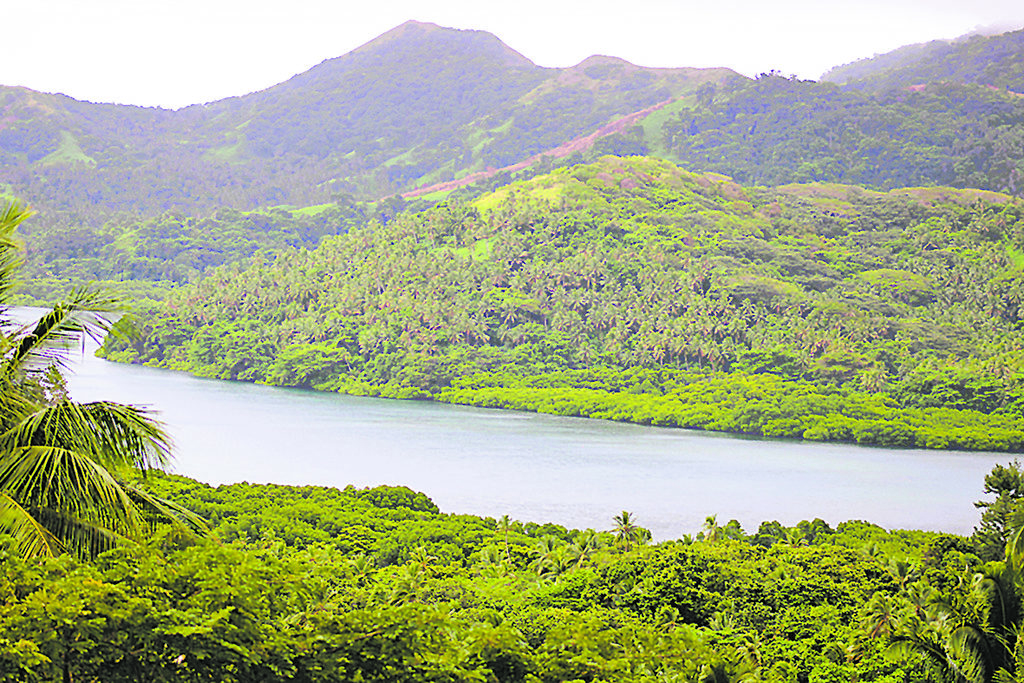
View of the inlet at Matuku that shelters the village of Lomati.
Picture: ALIFERETI SAKIASI
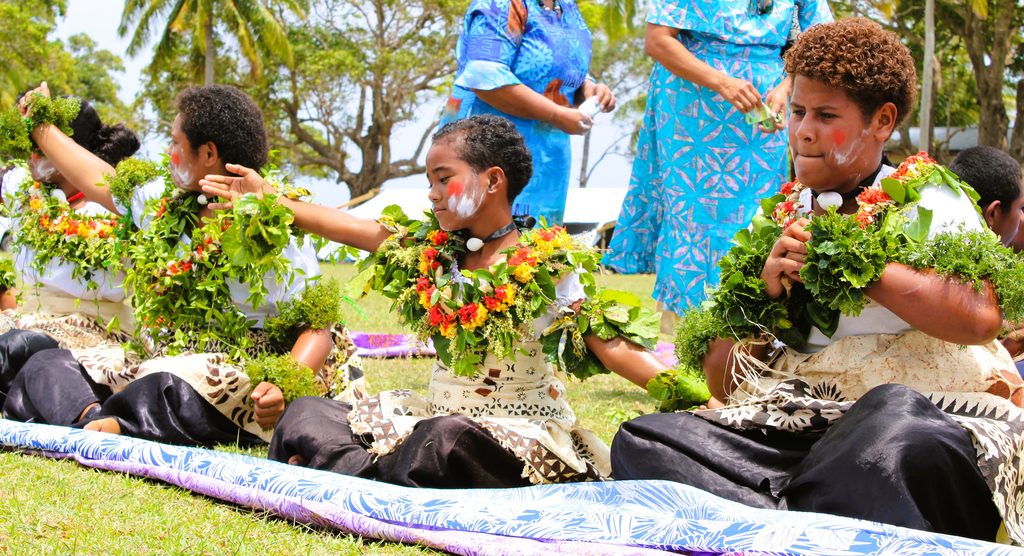
Women play a central role in Matuku, as the myth of Burotukula illustrates. These are young ladies of Matuku Secondary School performing meke during the Matuku and Fiji Day celebrations in Yaroi Village. Picture: ALIFERETI SAKIASI
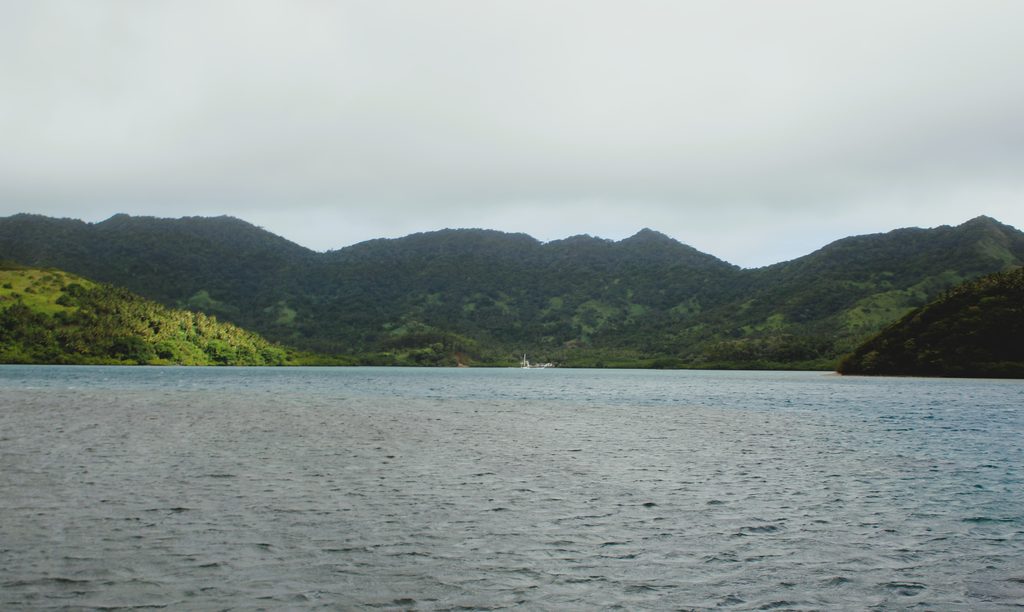
View from the Matuku jetty towards Lomati village. Picture: ALIFERETI SAKIASI
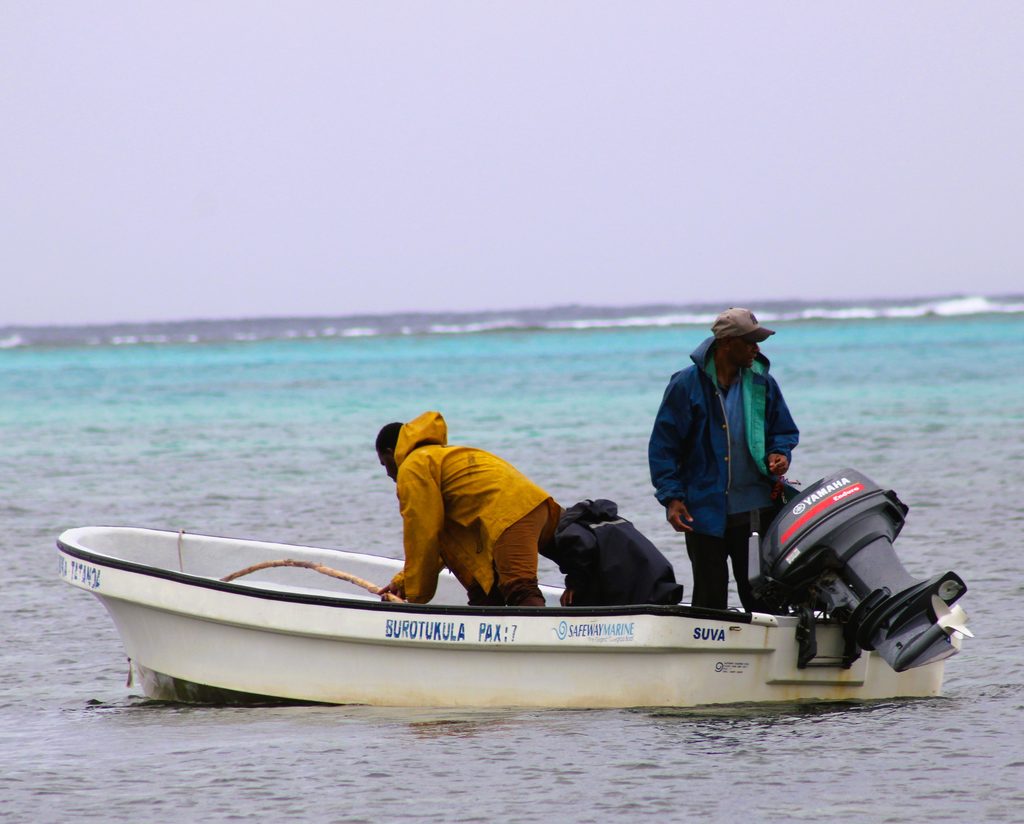
Matuku fishermen prepare to head out to sea. Note the name of their boat ‘Burotukula’. Picture: ALIFERETI SAKIASI
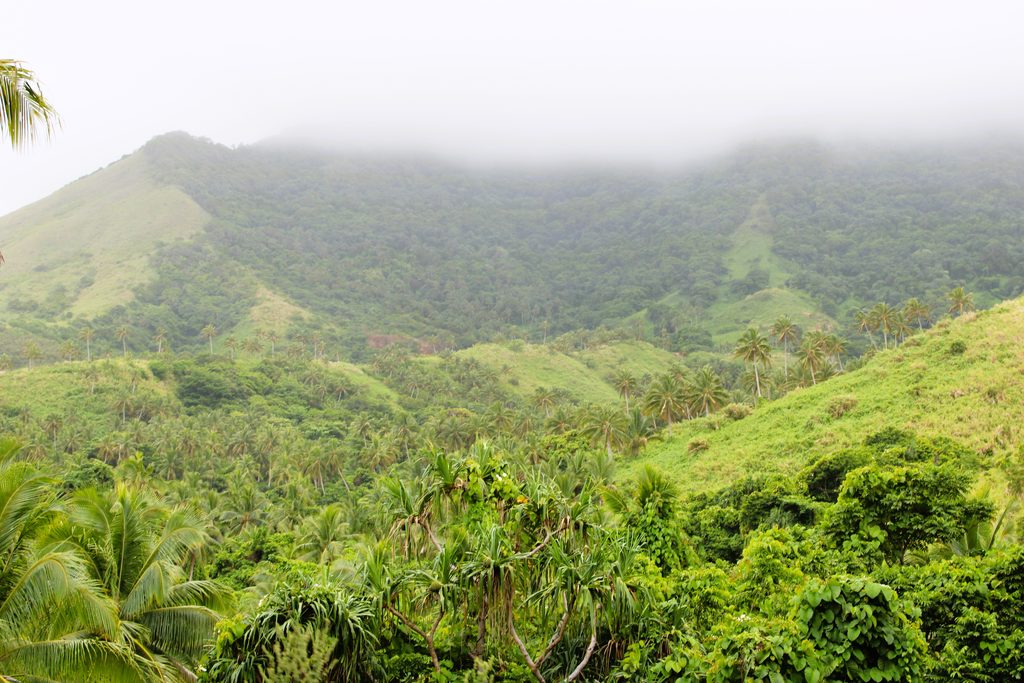
Matuku is a mountainous island, with thick tropical forest and fertile soil. Picture: ALIFERETI SAKIASI
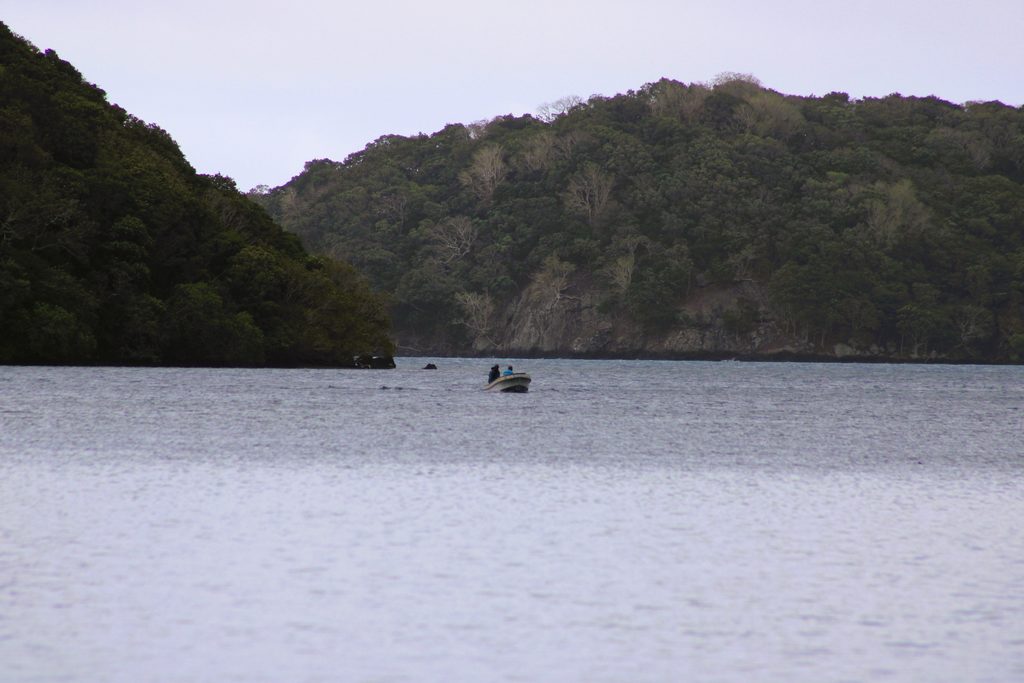
Below: View from Lomati landing towards the Matuku jetty. Picture: ALIFERETI SAKIASI

